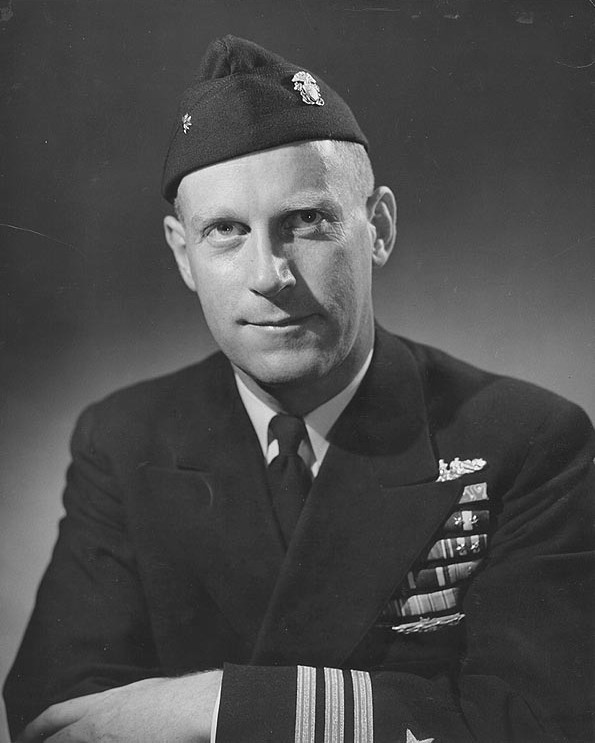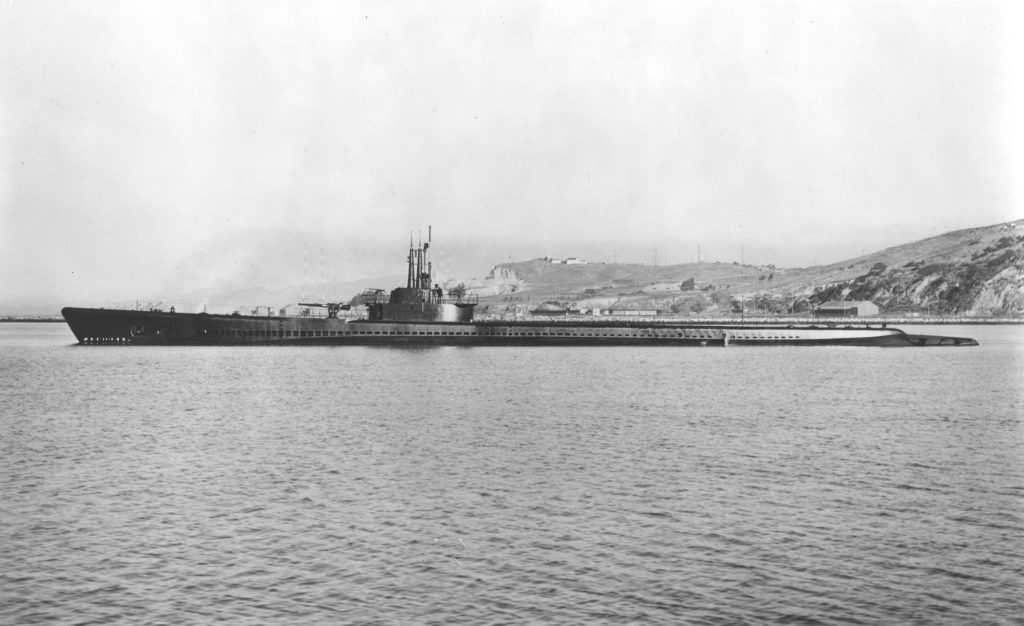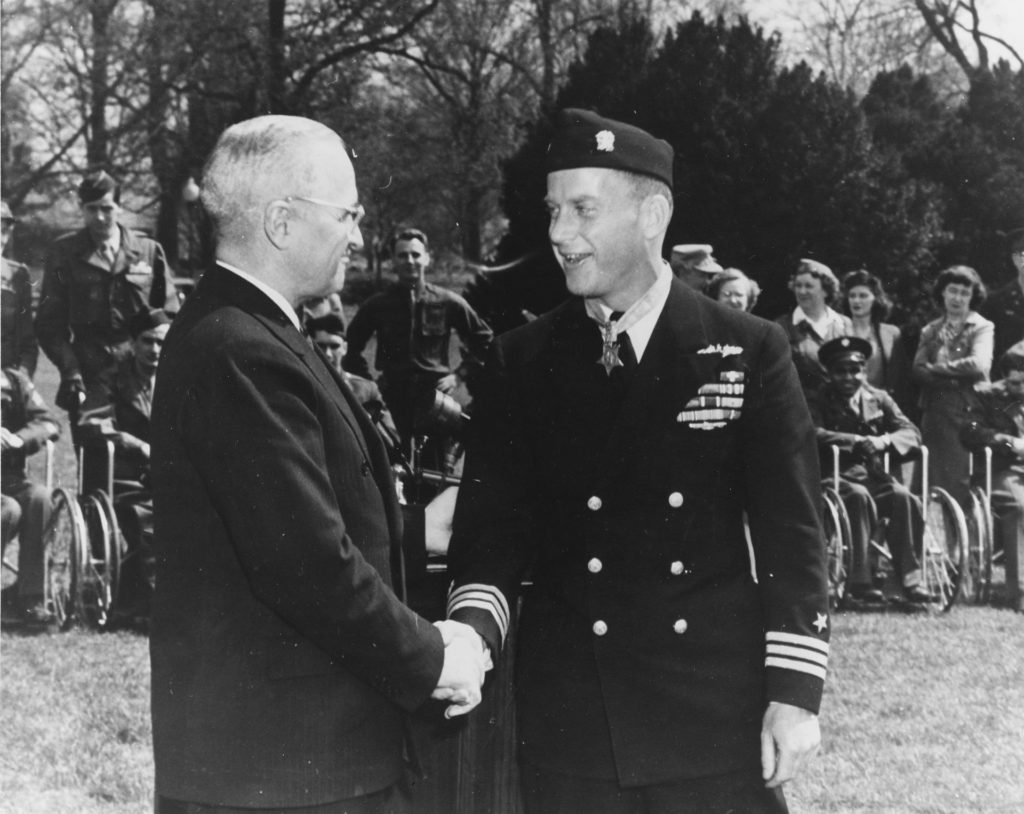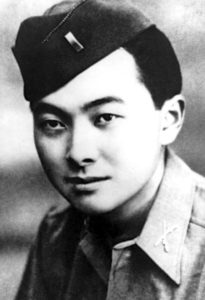
Even before the USS Tang headed out on its fifth war patrol, its captain, CDR Richard “Dick” O’Kane was already one of the most successful submariners of the war. As executive officer of the USS Wahoo (SS-238), under the legendary command of Dudley “Mush” Morton, O’Kane had played a central role in that submarine’s early war achievements.
Taking command of the new Balao-class submarine USS Tang (SS-306), O’Kane continued his winning ways. In his first four patrols in the Pacific, O’Kane and the Tang sank 17 Japanese ships (72,000 tons) and had earned a Presidential Unit Citation for its third patrol in mid-1944.
Departing Pearl Harbor on September, 24, 1944, Dick O’Kane navigated the USS Tang into waters near the Formosa Strait. On the night of October 10-11, 1944, the Tang sank two freighters – Joshu Go and Gita Maru.
Further on her patrol, Tang encountered a large Japanese convoy on October 23 and moved in for a night surface attack. O’Kane fired a spread of torpedoes that smashed into three different ships, blowing the stern off of the farthest ship in the line. Coming quickly about to line up its stern tubes, the Tang had to quickly dodge a tanker that had turned to ram the submarine. Missing the Tang, this wayward tanker crashed into another Japanese tanker instead. Free of immediate danger, the Tang lined up on its immobile target and fired four more torpedoes from its stern at 400 yards. As the last tanker exploded in flames, O’Kane evaded an escort destroyer bearing down on it.

The very next night, October 24, 1944, the Tang found yet another Japanese convoy. The ever-aggressive Tang moved in and fired six torpedoes at three of the ships. Following the convoy, the Tang turned and fired her stern torpedoes at another freighter and a tanker. The Tang’s torpedoes found the tanker, which blew up, and another struck a nearby Japanese destroyer that had raced around the tanker’s stern. While the destroyer sank, the tanker remained afire and afloat.
With its last two torpedoes, Tang took dead aim on the listless tanker. The last of her 24 torpedoes – an electric Mark 18 – broached the surface, made a hard-left turn, and circled towards the Tang. Sensing the immediate danger, O’Kane called for flank ahead speed, but even that maneuver did not save the Tang as its own torpedo – it’s very last – struck the sub near the stern. The explosion flooded three compartments and the submarine began to sink. Of the nine officers and men on the bridge, including O’Kane, three were able to swim through the night. Of the men inside the sinking submarine, 13 were able to escape to the surface using the Momsen Lung, but only 5 of those men were able to swim long enough till being picked up by the Japanese Navy.
On what would have been one of the most successful patrols by any U.S. submarine, a fluke torpedo led to terrible tragedy. Dick O’Kane and the other survivors were taken on board the Japanese ship by survivors of the ships they had just sunk. O’Kane would be a POW for the rest of the war.
For this final patrol in which the USS Tang sank seven ships (21,772 tons), the submarine would be awarded its second Presidential Unit Citation and O’Kane would receive the Medal of Honor. O’Kane and the Tang would ultimately be credited with sinking 24 ships (93,824 tons) – making O’Kane the top submarine skipper of the war*.

Born in Dover, New Hampshire, O’Kane was a 1934 graduate of the United States Naval Academy. He retired from the Navy as a Rear Admiral and passed away in Petaluma, California in 1994. He is buried at Arlington National Cemetery.
* In 1980 the Tang’s total was increased back to its original estimate of 116,454 tons sunk.
Learn More
- USS Tang SS-306 (US Navy History and Heritage Command
- Images of the USS Tang (Navsource)



